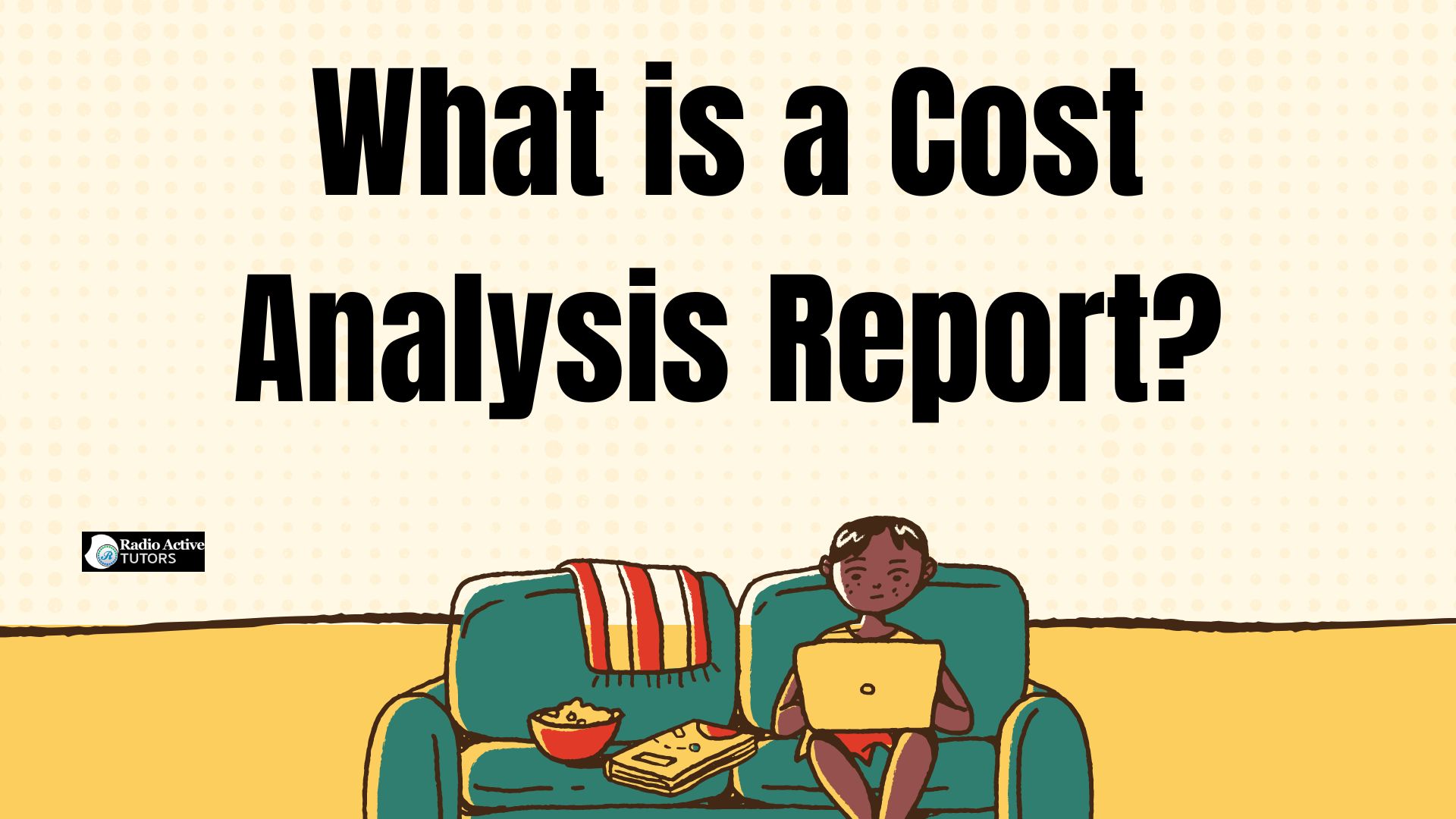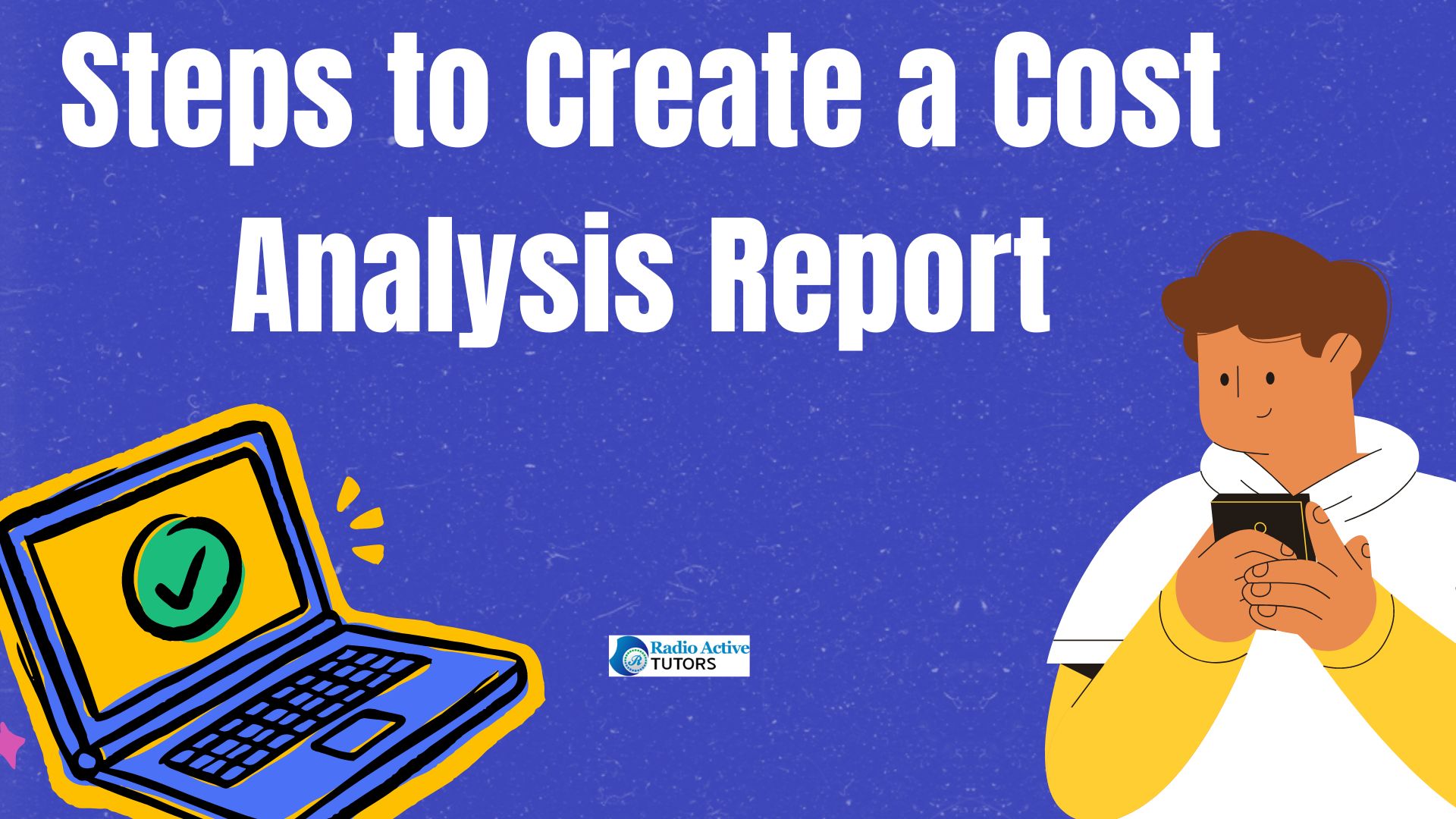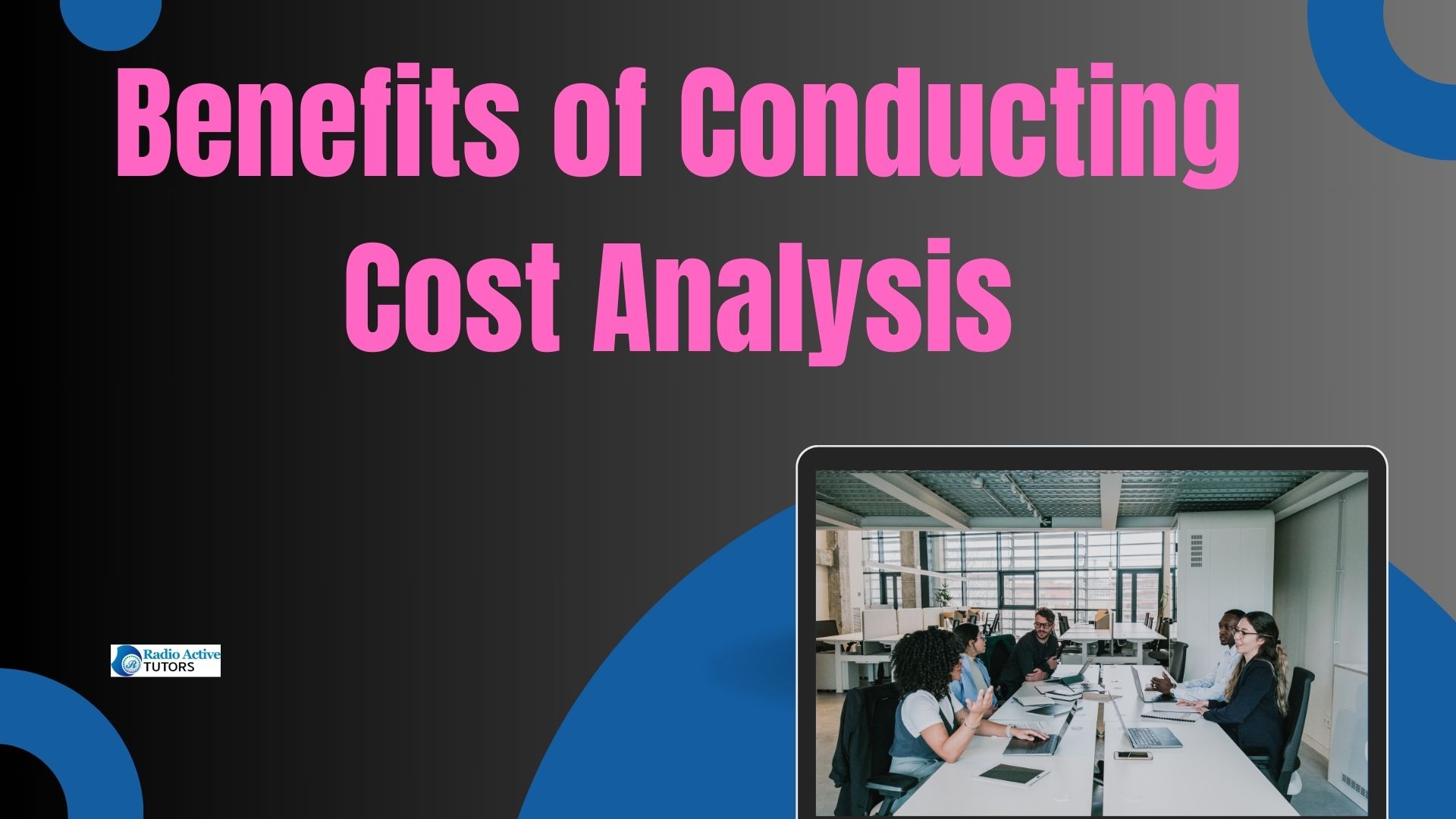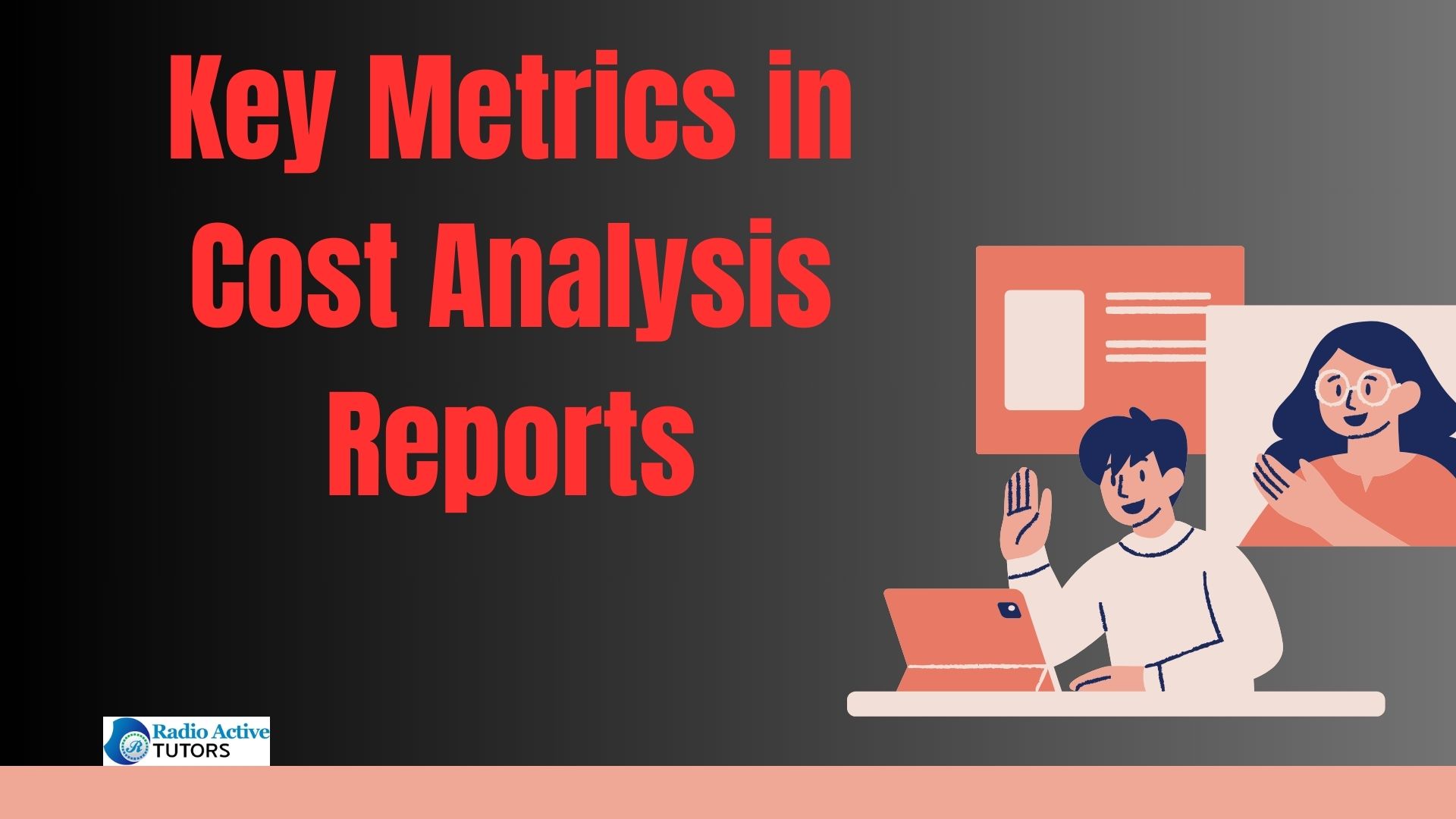Table of Contents
I. Introduction to Cost Analysis Reports
II. Types of Cost Analysis Reports
III. Components of Cost Analysis Reports
IV. Steps to Create a Cost Analysis Report
V. Benefits of Conducting Cost Analysis
VI. Cost Analysis Reports vs. Financial Statements
VII. How to Improve Cost Analysis Reports Accuracy
VIII. Key Metrics in Cost Analysis Reports
IX. Integrating Cost Analysis reports with Business Strategy
X. FAQs about Cost Analysis Reports
I. Introduction to Cost Analysis Reports
- What is a Cost Analysis Report?

A Cost Analysis Report is a comprehensive examination and breakdown of the various costs incurred by a business during its operations. It provides a detailed overview of both direct and indirect expenses, offering insights into how resources are allocated and utilized. This report serves as a critical tool for decision-making and strategic planning, helping businesses understand their cost structures, identify cost-saving opportunities, and optimize resource allocation. By analyzing cost data across different categories and time periods, organizations can gain a clearer understanding of their financial health and operational efficiency.
- Importance of Cost Analysis Reports
Cost Analysis Reports play a crucial role in helping businesses manage their finances effectively and make informed decisions. By meticulously examining and categorizing various costs, these reports provide insights into where and how a company is spending its resources. This information is essential for evaluating the profitability of products or services, identifying areas of inefficiency, and making adjustments to improve overall financial performance. Moreover, Cost Analysis Reports enable organizations to set realistic budgets, forecast future expenses, and strategize for growth. Ultimately, they empower businesses to optimize their operations, enhance competitiveness, and achieve long-term success in a dynamic and challenging marketplace.
- Why Businesses Need Cost Analysis Reports
Cost Analysis Reports are indispensable for businesses because they provide a clear and detailed view of their financial health. By examining costs across different categories and operations, businesses can identify where resources are being allocated and how efficiently they are being used. This information is crucial for making informed decisions about pricing, budgeting, and resource allocation. Cost Analysis Reports also help businesses to understand their cost structures, which enables them to pinpoint opportunities for cost reduction and process improvement.
In addition, these reports provide a basis for strategic planning, allowing businesses to set achievable financial goals and monitor progress towards them. Ultimately, Cost Analysis Reports empower businesses to enhance profitability, manage risks effectively, and maintain a competitive edge in their industry.
II. Types of Cost Analysis Reports
- Direct Costs vs. Indirect Costs
In cost analysis reports, understanding the distinction between direct costs and indirect costs is crucial. Direct costs refer to expenses directly attributable to a specific project or product, such as materials, labor, and equipment. These costs are straightforward and can be easily traced to the cost object. In contrast, indirect costs are those not directly tied to a specific project or product but are necessary for operations, such as utilities, rent, and administrative salaries. Indirect costs are essential for conducting business but are distributed across multiple cost objects.
Both types of costs are essential components of cost analysis reports, providing insights into the total cost of production or service delivery and aiding in decision-making processes regarding pricing, budgeting, and resource allocation.
- Variable Costs vs. Fixed Costs
In cost analysis reports, distinguishing between variable costs and fixed costs is fundamental. Variable costs are expenses that fluctuate in direct proportion to production or sales volume, such as raw materials, direct labor, and commissions. These costs rise or fall depending on the level of activity within a business. On the other hand, fixed costs remain constant regardless of production or sales volume and include expenses like rent, salaries of permanent staff, and insurance. Understanding the dynamics between variable and fixed costs is crucial for managers and analysts in making informed decisions about pricing strategies, break-even points, and cost reduction initiatives. By analyzing these costs, businesses can optimize their operations and improve profitability.
- Marginal Costs vs. Average Costs

In cost analysis reports, distinguishing between marginal costs and average costs is essential for understanding cost structures and making informed business decisions. Marginal costs refer to the additional cost incurred by producing one more unit of a product or service. These costs include direct materials, direct labor, and any additional variable costs required to produce the next unit. Marginal costs help businesses determine the profitability of producing additional units and are crucial for pricing decisions in competitive markets.
On the other hand, average costs, also known as unit costs, are calculated by dividing the total cost (both fixed and variable) by the number of units produced. Average costs provide insights into the overall cost efficiency of production and are useful for setting long-term pricing and production targets. By analyzing both marginal and average costs, businesses can optimize their production processes and pricing strategies to maximize profitability and efficiency.
III. Components of Cost Analysis Reports
In cost analysis reports, the cost structure refers to the composition of costs within a business or project, providing a detailed breakdown of how expenses are allocated across different categories. The components of a cost structure typically include both fixed costs, which remain stable regardless of production levels, and variable costs, which fluctuate based on the volume of goods or services produced. Understanding the cost structure is crucial for businesses to assess profitability, optimize resource allocation, and make informed decisions about pricing, budgeting, and cost management strategies.
By analyzing the cost structure, businesses can identify cost drivers, streamline operations, and improve overall financial performance. Additionally, the cost structure helps businesses to evaluate the impact of changes in production volumes or market conditions on their profitability and competitiveness.
Cost drivers are key factors within a business or project that directly influence the costs incurred. Identifying these drivers is essential in cost analysis reports as they help understand the underlying reasons for cost fluctuations and changes. Common cost drivers include production volumes, labor hours, raw material prices, and energy costs. By analyzing cost drivers, businesses can pinpoint areas where costs are most sensitive to changes and prioritize efforts to control or reduce expenses.
This analysis also informs strategic decision-making, such as whether to invest in new technology to improve efficiency, renegotiate supplier contracts, or adjust pricing strategies. Understanding cost drivers allows businesses to optimize their cost structure and enhance overall profitability by focusing resources where they can have the most significant impact.
In cost analysis reports, cost allocation methods are crucial for distributing expenses across different cost objects or activities within a business. These methods ensure that costs are accurately assigned to the appropriate departments, products, or projects, facilitating effective decision-making and performance evaluation. Common cost allocation methods include activity-based costing (ABC), which assigns costs based on the activities that drive them, and direct allocation, where costs are directly assigned to a specific cost object.
Other methods include step-down allocation, which allocates costs sequentially across departments, and reciprocal allocation, which accounts for mutual services provided among departments. Choosing the right cost allocation method depends on the nature of the costs and the objectives of the analysis. By employing these methods, businesses can better understand their cost structures, improve resource allocation, and enhance their ability to manage costs effectively.
IV. Steps to Create a Cost Analysis Report

In the process of creating a cost analysis report, collecting accurate and comprehensive cost data is a critical initial step. This involves gathering detailed information on all expenses associated with a particular project, product, or activity. Cost data collection typically includes gathering data on direct costs, such as materials, labor, and equipment specifically related to the project. Indirect costs, such as administrative expenses, utilities, and overhead, also need to be collected to provide a complete picture of total costs.
Data collection methods may vary depending on the nature of the costs and the organization’s accounting system. It often involves accessing financial records, invoices, payroll data, and expense reports. Additionally, estimating future costs based on historical data or projections may also be necessary. Ensuring the accuracy and completeness of cost data is essential to producing a reliable cost analysis report that supports informed decision-making and effective cost management strategies.
- Identifying Cost Categories
In the process of creating a cost analysis report, identifying cost categories is a crucial step to systematically organize and classify expenses. Cost categories typically encompass both direct and indirect costs incurred by a business or project. Direct costs include expenses directly attributable to the production of goods or services, such as raw materials, labor, and production equipment. Indirect costs, on the other hand, encompass expenses that are necessary for business operations but are not directly tied to a specific product or project, such as administrative salaries, rent, utilities, and maintenance.
By clearly defining and categorizing costs, businesses can better understand their cost structure and allocate resources effectively. This step is essential for accurate cost analysis and provides insights into where costs are incurred, helping businesses to identify cost-saving opportunities and improve overall financial performance.
In the process of creating a cost analysis report, analyzing cost data is a critical step to derive meaningful insights and make informed decisions. This involves examining the collected cost data in detail to understand the composition of expenses, identify cost trends, and evaluate cost drivers. During the analysis phase, businesses compare actual costs against budgeted costs or historical data to assess variances and understand the reasons behind them.
Additionally, analyzing cost data involves calculating various cost metrics such as average costs, marginal costs, and cost per unit, depending on the specific requirements of the analysis. This step also includes identifying any outliers or anomalies in the cost data that may require further investigation. By conducting a thorough analysis of cost data, businesses can uncover opportunities for cost reduction, optimize resource allocation, and improve overall profitability and efficiency. The insights gained from this analysis are crucial for making strategic decisions and developing effective cost management strategies.
- Reporting and Presenting Findings
In the final step of creating a cost analysis report, reporting and presenting findings effectively is crucial to communicate insights and recommendations clearly to stakeholders. This involves organizing the analyzed cost data into a structured format that highlights key findings, such as total costs incurred, cost breakdown by category, and variances from budgeted or historical costs. The report should also include relevant cost metrics and comparisons to facilitate understanding of cost trends and performance.
Presenting findings in a clear and concise manner helps stakeholders, such as management, investors, and decision-makers, to grasp the financial implications and make informed decisions. Visual aids such as charts, graphs, and tables can be used to enhance the presentation of data and make complex information more accessible. Additionally, the report should outline any recommendations for cost optimization, resource allocation, or strategic adjustments based on the analysis. By effectively reporting and presenting findings, businesses can ensure transparency, accountability, and alignment in achieving their financial and operational goals.
V. Benefits of Conducting Cost Analysis

Conducting cost analysis provides significant benefits to decision-making processes within businesses. By thoroughly understanding and analyzing costs, organizations can make informed decisions that enhance profitability, efficiency, and overall performance. Cost analysis helps identify areas where costs can be reduced or controlled, allowing businesses to streamline operations and improve their bottom line. Moreover, it enables businesses to evaluate the profitability of products, projects, or services, facilitating strategic decisions about pricing, resource allocation, and investment.
Cost analysis also supports budgeting and forecasting by providing accurate cost data and insights into future cost trends. Overall, the benefits of conducting cost analysis include better financial management, improved decision-making, and the ability to respond proactively to changes in the business environment. This process ultimately helps businesses achieve their strategic objectives and maintain competitiveness in their industry.
Conducting cost analysis provides significant benefits in resource allocation within businesses. By thoroughly analyzing costs, organizations can make more informed decisions about where to allocate their resources. This includes determining the optimal allocation of funds, manpower, and other resources to maximize efficiency and productivity. Cost analysis helps identify areas where resources are being underutilized or where there is potential for cost savings, enabling businesses to reallocate resources to more productive activities.
Additionally, it assists in prioritizing investments and projects based on their potential return on investment and cost-effectiveness. This strategic allocation of resources ensures that businesses can operate more efficiently, reduce waste, and achieve their operational goals more effectively. Overall, cost analysis plays a crucial role in resource allocation by providing the necessary insights and data-driven decisions to optimize the use of resources and improve overall business performance.
Conducting cost analysis provides significant benefits in performance evaluation within businesses. By analyzing costs, organizations can assess the efficiency and effectiveness of their operations. Cost analysis helps in evaluating the performance of different departments, products, or projects by comparing actual costs against budgeted costs or industry benchmarks. This evaluation provides insights into areas where costs are well-managed and where improvements are needed. By understanding cost structures and drivers, businesses can identify opportunities for cost reduction and efficiency improvements, which directly contribute to enhanced performance.
Moreover, cost analysis facilitates the identification of profitability drivers and helps in making strategic decisions to optimize profitability. By integrating cost analysis into performance evaluation, businesses can ensure that their resources are used effectively, operations are streamlined, and overall performance is continuously improved. Thus, cost analysis supports businesses in achieving their strategic objectives and maintaining competitiveness in their industry.
VI. Cost Analysis Reports vs. Financial Statements
Cost analysis reports and financial statements serve different purposes in business management and financial analysis. Cost analysis reports focus specifically on analyzing and understanding the costs associated with producing goods or delivering services within a business. These reports provide detailed insights into both direct and indirect costs, helping businesses identify cost drivers, assess profitability, and make informed decisions about pricing, resource allocation, and cost-saving initiatives. In contrast, financial statements, such as the income statement, balance sheet, and cash flow statement, provide a broader view of a company’s overall financial health and performance.
They summarize revenues, expenses, assets, liabilities, and cash flows over a specific period, offering stakeholders, including investors and creditors, a comprehensive understanding of the company’s financial position and its ability to generate profit and manage cash flow. While cost analysis reports are internal documents used for operational and strategic decision-making, financial statements are primarily used for external reporting and compliance purposes, as well as for assessing the financial viability and stability of a company. Both types of reports are essential for effective financial management and strategic planning, providing complementary insights into different aspects of a business’s financial performance and operations.
VII. How to Improve Cost Analysis Reports Accuracy
Improving the accuracy of cost analysis reports is essential for businesses to make informed decisions and effectively manage their finances. Several strategies can be employed to enhance the accuracy of these reports. First, ensuring comprehensive data collection is crucial. This involves gathering detailed information on both direct and indirect costs, using reliable sources such as financial records, invoices, and expense reports. Second, verifying the accuracy of cost data through reconciliation and cross-checking with multiple sources can help identify discrepancies and ensure data integrity. Third, employing robust cost allocation methods, such as activity-based costing (ABC) or direct allocation, ensures that costs are allocated accurately to cost objects.
Fourth, regularly reviewing and updating cost analysis methodologies and assumptions can account for changes in business operations or market conditions. Finally, leveraging advanced analytics and software tools can automate calculations, improve data accuracy, and provide real-time insights into cost trends and variances. By implementing these strategies, businesses can improve the accuracy of their cost analysis reports, enabling better decision-making, cost management, and overall financial performance.
VIII. Key Metrics in Cost Analysis Reports

Key metrics in cost analysis reports are essential tools for businesses to understand and manage their financial performance effectively. These metrics provide quantitative insights into various aspects of cost management and operational efficiency. Common key metrics include total costs, which encompass both direct and indirect costs incurred by the business. Cost per unit helps in understanding the average cost of producing a single unit of a product or delivering a service. Variable costs fluctuate with production volume, while fixed costs remain stable.
Average costs offer an overview of the overall cost per unit produced by dividing total costs by the number of units. Marginal costs reveal the cost of producing an additional unit. Cost variance compares actual costs against budgeted or standard costs, indicating deviations that need attention. These metrics aid in identifying cost-saving opportunities, optimizing resource allocation, and enhancing profitability. They also facilitate decision-making processes by providing insights into cost efficiency and performance metrics that guide strategic planning and operational improvements.
IX. Integrating Cost Analysis reports with Business Strategy
Integrating cost analysis reports with business strategy is crucial for implementing a cost leadership strategy effectively. Cost leadership aims to achieve competitive advantage by producing goods or services at the lowest cost in the industry. Cost analysis reports provide the necessary data and insights to support this strategy by identifying cost-saving opportunities, optimizing cost structures, and improving operational efficiency. By analyzing costs across different areas of the business, such as production, distribution, and administration, businesses can strategically reduce costs while maintaining product quality and customer satisfaction.
This integration allows businesses to set competitive prices in the market, attract price-sensitive customers, and potentially increase market share. Moreover, cost analysis reports help in monitoring and controlling costs continuously, ensuring that the cost leadership strategy is sustained over time. Overall, integrating cost analysis with business strategy supports the implementation of a cost leadership strategy by providing the necessary information and guidance to achieve cost efficiency and maintain competitiveness in the marketplace.
Integrating cost analysis reports with business strategy is essential for implementing a differentiation strategy effectively. A differentiation strategy aims to create a unique and desirable position in the market by offering products or services that are perceived as distinct by customers. Cost analysis reports play a critical role in this strategy by helping businesses understand the cost implications of differentiating factors, such as product features, quality, and customer service.
By analyzing costs, businesses can identify opportunities to invest in value-adding activities that enhance differentiation without significantly increasing costs. This integration allows businesses to effectively allocate resources towards activities that contribute to their competitive advantage, such as research and development, innovation, and marketing. Cost analysis reports also help in setting appropriate pricing strategies that reflect the value of differentiated products or services to customers. Overall, integrating cost analysis with business strategy supports the implementation of a differentiation strategy by ensuring that the business’s unique offerings are both profitable and sustainable in the market.
X. FAQs about Cost Analysis Reports
- What is the difference between direct and indirect costs?
- How often should cost analysis reports be updated?
- What are the limitations of cost analysis?
- How can cost analysis reports help in reducing costs?
